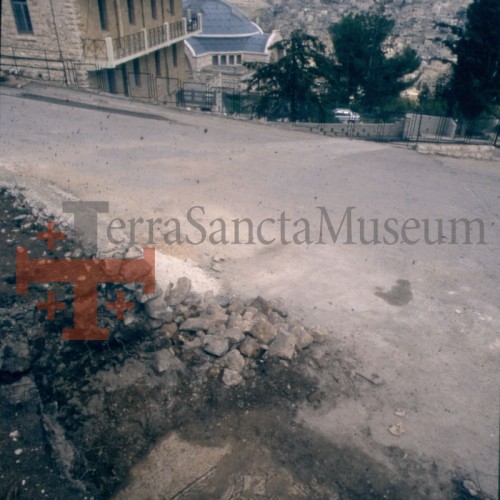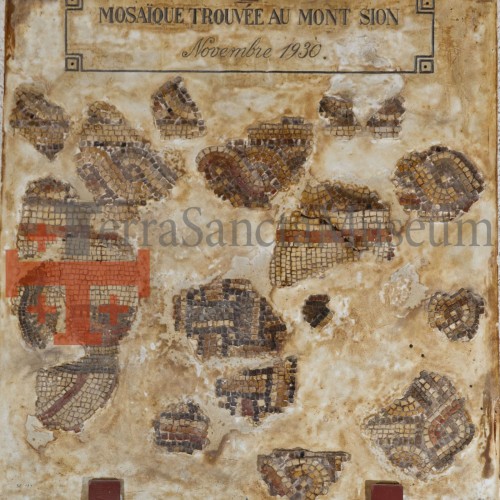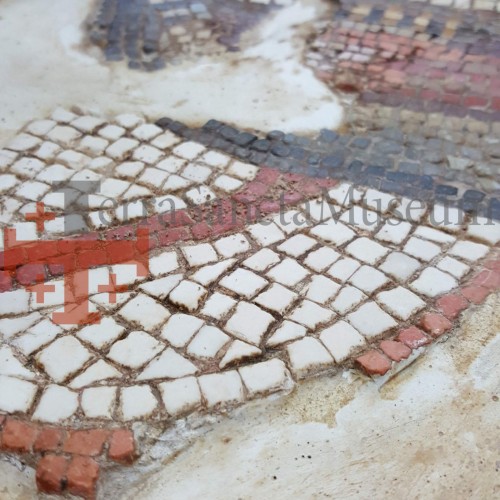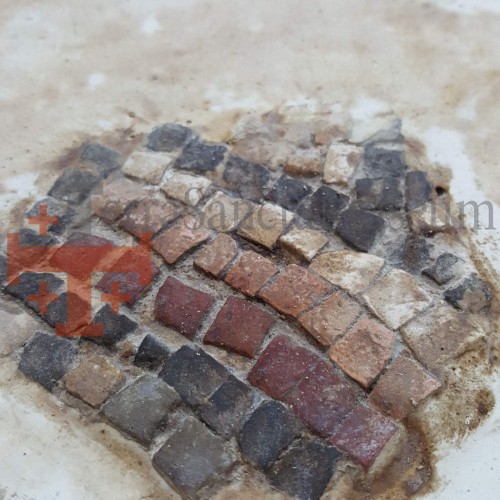Preparing the opening of the Terra Sancta Museum: The restoration of a mosaic found on Mt. Sion
- The construction to complete the archaeological section of the Terra Sancta Museum was recently opened, but the curatorial work for preparing the layout of this new wing has been underway already for some time. The new sections to be opened will be dedicated to the various places of the Holy Land, where the archaeologists of the Studium Biblicum Franciscanum have been excavating since the end of the 19th century.
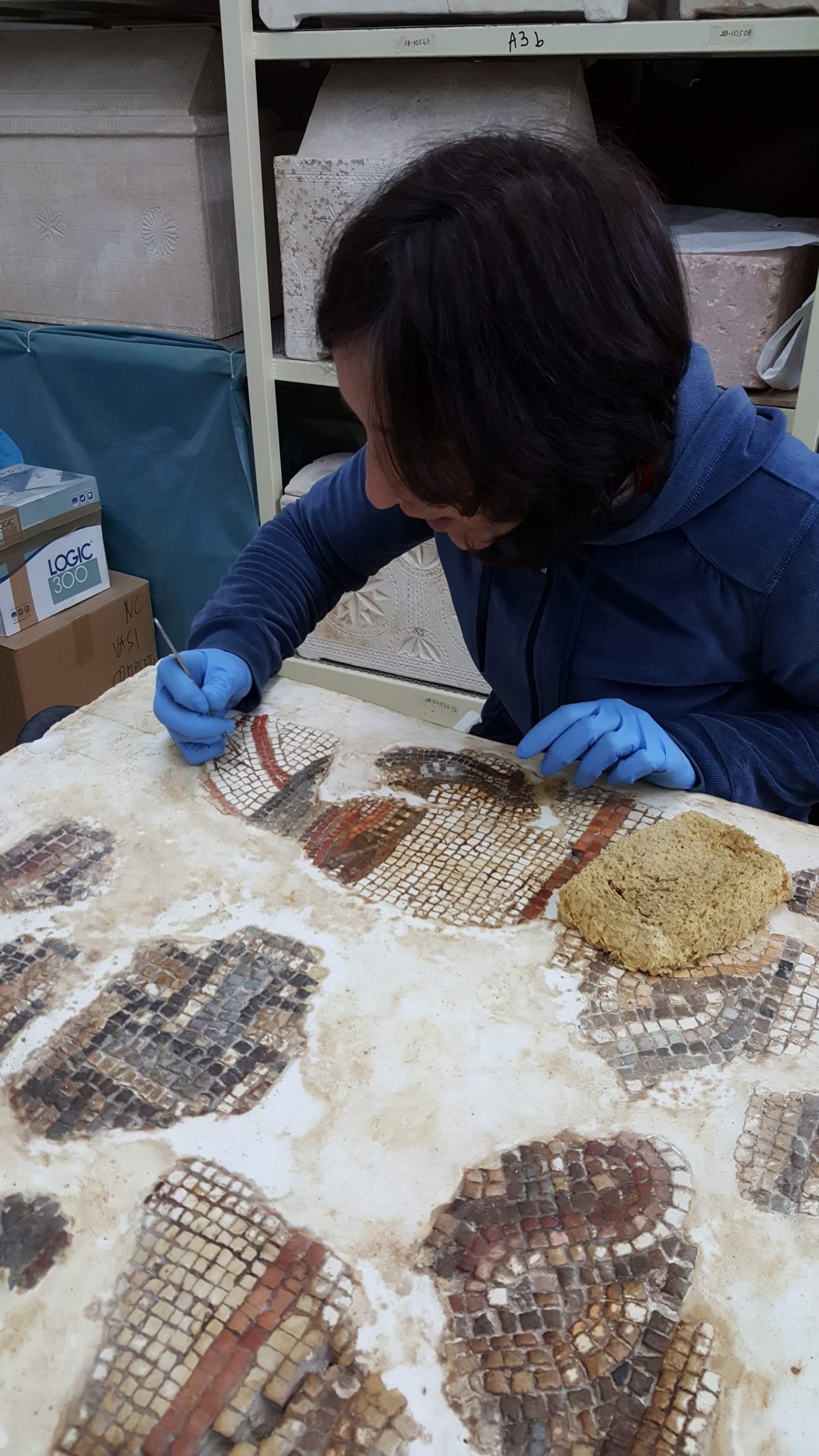
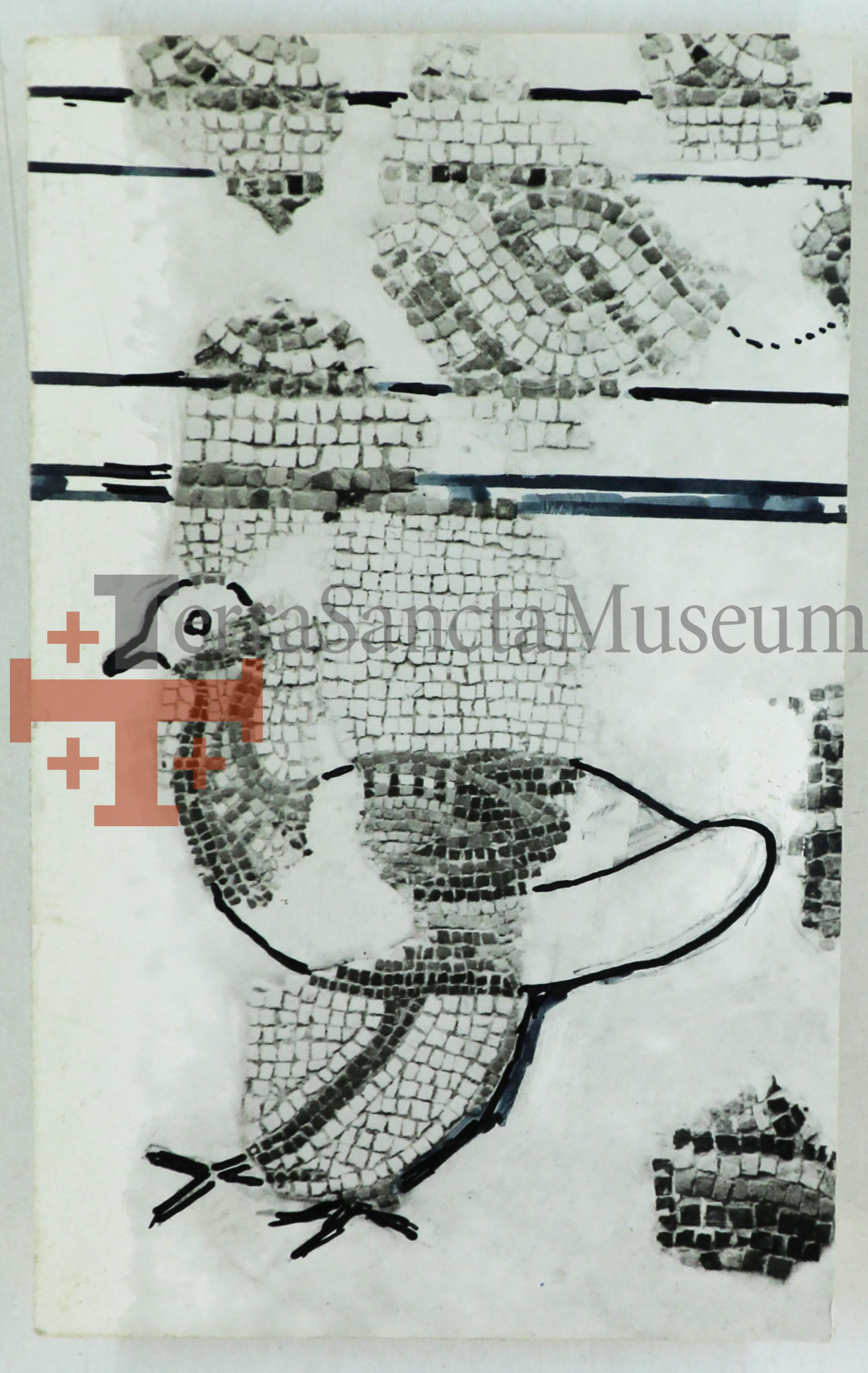
“In the hall dedicated to Jerusalem will also be exposed the retrievals of the digs conducted on Mt. Sion, a height of around 750 m., to the southeast of modern-day Jerusalem,” Dr. Daniela Massara – of the Pro Terra Sancta Museum – tells us. We met her in the museum’s restoration laboratory in the heart of the old city of Jerusalem. With the help of the museum’s restoration expert, Dr Massara is focused on cleaning the fragments of a mosaic which will be part of the exposition.
“It was found in 1930 in the area of the Latin cemetery of the Franciscan convent which is built just on Mt. Sion. We do not have much data on the context of the finding of this mosaic”—continues Dr. Massara—“Fr. Bagatti (Friar Bellarmino Bagatti, OFM, 1905–1990) is the first to document the existence of it with a photo of a fragment representing a little bird, and he lists the mofits depicted upon the fragments: a braided frame, a plover, and nothing else. We do not know who first discovered these fragments, and if, along with them, anything else was found. What is actually preserved is a panel with about 20 pieces with a braid, a bird and a mat decoration, a decorative motif in greater respect than those listed by Father Bagatti.“
These few elements, therefore, were enough to trigger the curiosity of the archaeologist, a specialist in mosaics of the Roman age, who undertook studies on mosaics, which then flowed into an article now being published, of which she gives us a summary while working on the cleaning of the tiles.
“The study of the mosaic is marked by different phases“—she tells us—”Initially each fragment is documented, showing the measurements, size and cut of the tesserae, material, colors, style, and how they are connected. The second phase is the analysis of the decoration and the archaeological/topographical context. Studying the fragments I found comparisons from an area very close to the Sion cemetery, the Gallicantu, where in the 90s, a mosaic was found which has a composition with a figure in the center: the bust of the earth goddess “Ge” and decorative motifs with birds that are of the same style as our bird. The braided motif also recurs. This mosaic could perhaps belong to a Roman villa and the subject could be linked to so-called “Xenia” elements, gifts of hospitality, which both manifest the richness of the dominus, and are associated with other themes, such as the Seasons“.
Comparison with the mosaic at the Gallicantu makes it easier to form a hypothesis of its date: “Many elements are already present in the figurative culture of the Roman age and even the composition would bring the date of the mosaic to a period after the third century AD: the birds in fact are not inserted in a narrative context or landscape, but on a flat background, and therefore had to have a symbolic meaning, probably related to the life of the house.”
“The study of the detail then extends to the consideration of the general context: “Since the Israeli archaeological authorities have found near the City of David a Roman villa dating back to the same period, one can imagine that along the slope that descends from Sion into the valleys of the Turopeion and Cedron to the pool of Siloam—after the construction of the walls of the Hadrian period—panoramic villas were developed. Our mosaic could, therefore, have been part of the decoration of the convivial environments of one of these residences“.
Starting from fragments that seem to be dead and insignificant, archaeology – through a scientific approach supported by many thesis – recreates a more complex and complete story. This story, supported by historical facts which may be enriched over time by new discoveries, is the one that we intend to tell in the rooms of the Terra Sancta Museum.

